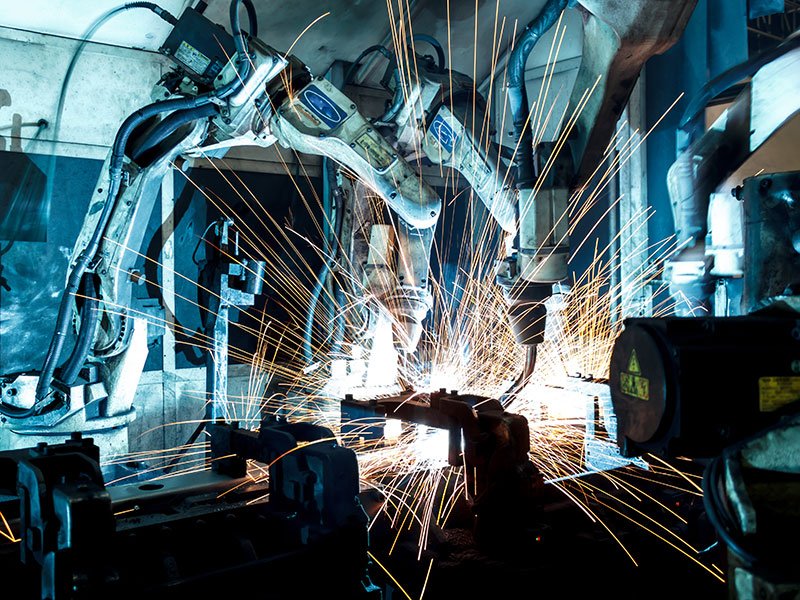In application, industrial policy reflects a complex interplay between national economic policy, international competitiveness policy and international competition policy. Industrial policy cannot be dismissed with glib assertions about the primacy of market forces.
Economic policy is concerned with a wide array of policy tools, including education, a well-functioning intellectual property system, fiscal and monetary policy for full employment, and a defensible tax system.
After that, for neoclassical economists, there is little left to do except where interventions may be justified on the grounds of market failure. But in a policy sense, market failures do not always indicate where and how much should be invested and what regulatory oversight should be applied.

Competitiveness policy is concerned with maintaining strong terms of trade, even if the exporting industries are natural-resource-based or services and not complex and technology-driven.
In this framing, Australia should, relative to its imports, export enough to prevent its trade deficit from getting too large. Exports are exports, even if imports destroy a local manufacturing capability that had developed on “infant industry arguments” around a high protective tariff regime.
Competition policy is concerned with the reality that nations compete – and compete vigorously. Australia gives tacit endorsement to competition policy by seeking to enter into better and more extensive trade agreements and maintaining a large network of overseas trade representation.
But Australia has not fully embraced other policy elements, such as a more globally competitive tax system and broad investments in research and development capacities and abilities.
Arguably, state governments are much more aggressive in international competition policy with FDI assistance and a range of other business subsidies.
These three policy elements – economic, competitiveness and competition – whilst collectively important and can modify the free reign of market forces, they fall short of embracing a strategic-industry policy for critically important sectors. This has prompted a response in the US:
In today’s new realpolitik world, no advanced nation can do without a strategic-industry policy unless it wants to put its national and economic security in the hands of foreign powers. As such, the most important economic question for the U.S. government is whether and to what degree it should seek domestic strength in key advanced industries. If policymakers answer that in the negative, then there is no need for a revised industrial strategy, or perhaps not even for a broader competitiveness policy. (Robert D. Atkinson, President and founder of the of US Information Technology & Innovation Foundation (ITIF) January 2022).
The most important policy question for Australia’s national and economic security is whether and to what degree it should act to strengthen strategically important industries and technologies.
This is, in one sense, a fundamental issue, but in another, to do nothing places our national and economic security at risk. This is a long way from a tactic of ‘picking winners’.
An industry policy narrative must commence with identifying the industries in which Australia requires adequate capabilities to be secure. It means analysing the strengths and weaknesses of each industry and implementing the correct policy interventions to spur competitive advantage.
Industry policy has traditionally been about creating jobs: it is now about creating capacities and capacities that will provide sustained national and economic security.
It is time to end the stale argument about free markets versus industrial policy. We need both: it means pursuing market-based policies for most of the economy and strategic industrial policy for select and strategic sectors.
A strategically oriented industry policy will involve identifying the correct policy interventions to drive competitive strengths, including direct production subsidies (as the United States CHIPS Act does for semiconductors), targeted investment attraction incentives, support for industry-led research and development (R&D), streamlining regulatory systems, removal of anti-competitive behaviours, and focused education and skills programs.
Some of these actions are already underway, by both the Commonwealth and the states, but they do not as yet amount to a nationally consistent and coherent strategic industry policy.
There is a lot to be done
Currently, Australia’s manufacturing sector has a GVA of $113 billion, making up 5.8 per cent of GDP—way behind Rental, Housing and Real Estate Services (13.9 per cent), Mining (10.4 per cent), Financial and Insurance Services (8.7 per cent) and Construction (8.0 per cent).
The largest manufacturing industry subdivisions are Food products (20.8 per cent), Machinery and equipment (13.6 per cent), Fabricated metal products (10.8 per cent), Basic chemical and chemical products (9.1 per cent), Primary metal and metal products (8.7 per cent), and Transport equipment (8.5 per cent), which covers motor vehicles, shipbuilding and boatbuilding, railway rolling stock, and aircraft.
Over the period 2011-12 to 2020-21, manufacturing production declined by 8.6 per cent in real (inflation-adjusted) terms. But this downward trend masks significant growth in Machinery and equipment manufacture (13.3 per cent) and manufacture of Food products (9.4 per cent).
Significantly, Machinery and equipment manufacturing has a strong technology and R&D component, covering the making of professional and scientific equipment, computer, electronic, and electrical equipment, domestic appliances, pumps, compressors, and heating and ventilation equipment. Segments of this industry could be regarded as highly strategic for Australia’s national and economic security.
Progress in Machinery and equipment manufacturing has been on display recently through the InnovationAus.com Innovation Papers and the Modern Manufacturing Expo.
The Innovation Papers and the Expo exhibits are replete with the application of advanced technologies. They provide testimony to the innovation commitment of Australian entrepreneurs and research organisations.
The Modern Manufacturing Initiative and predecessor programs, as well as state government programs, would have had some role in supporting this commitment. In a policy sense, we are not starting from a blank sheet, and it is important to drawn on what know in future policy design.
Food product manufacturing covers the processing of raw agricultural produce (grains, red and white meat) and more sophisticated processed food products.
Grains and red meat are significant exports, but many organisations, including Food Innovation Australia Limited, have argued Australia could do more to replace imports of more highly processed food items.
Progress is evident on the shelves of supermarkets with an increasing range of innovative Australian made food products.
Segments of the food manufacturing industry might also be regarded as strategic in relation to issues of food supply and security.
But there is a downside. In all the other 23 manufacturing industry subdivisions, there have been reductions in GVA – some substantial, such as Transport equipment (-22 per cent), Fabricated metal products (-14.1 per cent), Polymer and rubber products (-22.5 per cent), Textiles, clothing and footwear (-28 per cent), and Printing, including the reproduction of recorded media, (-42.6 per cent). These are often regarded as legacy industries, and they have fallen a long way behind international competitors.
The extent to which any or parts of these industries are strategic for Australia’s national and economic security is a matter for discussion and debate in the development of policy.
For example, there has been much recent comment about the preferences of state governments to import Transport equipment (trains, trams and ferries particularly) rather than encourage and support local manufacturing to underwrite a national capability.
Moreover, metal fabrication was an industry that preferred to seek subsidies at the end of the former industry assistance regime (tariff protection) rather than modernise and innovate and make products that end users wanted.
New commercial buildings import the bulk of their requirements for steel as well as glass, and other manufactured components. Australia no longer makes stainless steel.
So, where does that leave us? Are we looking at growing manufacturing through a domestic food processing dominated by overseas ownership and an emergent Machinery and equipment manufacturing sector that has no clear strategy or direction?
But on current trends, that’s about it. Without a strong strategic policy, manufacturing will continue to decline.
A national policy must involve the states and territories
A national industry policy must involve the state and territory governments. Currently, each has its own policies and strategies—sometimes complementary but often competing. There is no effective machinery for coordination in planning, priority, and resource allocation.
By contrast, industry and innovation policy in Agriculture has been coordinated through the Primary Industries Ministerial Council (formerly the Australian Agricultural Council) for 95 years. It works through a Standing Committee of officials and a range of subcommittees.
In the manufacturing industry, there has been no such national leadership. Yet, the states have many of the policy levers, including infrastructure investment, procurement, control over land use, regulations and a range of uncoordinated business development and innovation programs.
There have been Commonwealth-led coordinating committees of various sorts, but these do not carry the weight of a Ministerial Council. Too often, the Commonwealth is seen as overriding the States. States have their own overseas trade representatives, which focus on attracting industry and FDI.
A Manufacturing Industry Ministerial Council would be an essential plank in designing a national industry policy. It should be implemented through an intergovernmental agreement specifying participation at the Ministerial level.
So, where should the effort be made?
The following actions require consideration in the development of a strategically oriented national industry policy
- Establish a clear narrative about which manufacturing industry segments are strategic for Australia’s economy and national security. For example, the US has chosen semiconductors/computer chips and the space industry
- Ensure the narrative strikes a balance between addressing megatrends and missions (goals, objectives, and even moon shots
- Establish close interaction with states and territories – each playing to their strengths, and across Commonwealth agencies, including CSIRO and Austrade, and Departments with involvement in the manufacturing industry – including Industry Science and Resources, Health (medical devices, instruments, etc), DAFF (Food manufacture)
- Build capabilities, abilities, and talent in the R&D workforce for both industry and research organisations
- Encourage global manufacturers to invest in R&D locally as part of a nationally targeted Foreign Direct Investment (FDI) Strategy – find out what’s in their business plans (announced and unannounced) and how Australian industry can be part of that
- Provide effectively targeted incentives for ‘bootstrapped’ and firmly established medium size enterprises to invest in growth through capital and innovation programs. There are many success stories in this area that operate under the radar
- Support truly innovative manufacturing technology start-ups with a genuinely new to the world technology
- Establish a clear role for universities and public research organisations strategic industry policy
- Link to industry strategy to the broader strategies being developed for the ICT industry
- Establish a lead organisation to develop an investment and innovation plan. Australia 2030 was too broadly pitched – and did not address a burning platform – or a burning manufacturing industry
Dr John Howard is a Visiting Professor at the UTS Business School and Managing Director of Howard Partners, a public policy research and advisory firm that has been in business for 24 years. See www.howardpartners.com.au. John can be contacted at john@howapartners.com.au
Do you know more? Contact James Riley via Email.

